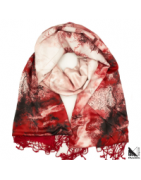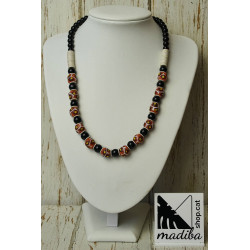For thousands of years, human beings have used beads with different objectives: simply as ornaments, amulets, and a symbol of a certain social category and even as currency in commercial exchanges. For its manufacture different materials can be used from the humblest such as clay, seeds or bone, some more elaborate of metal, amber or glass and the most luxurious made of metals or precious stones.
Since the 16th century, ships destined for Africa and the Americas were supplied with huge quantities of them. On the outward journey, they acted as ballast and upon arrival they were used to barter spices, fabrics, precious metals and even slaves. It was a currency that worked on most borders. Many were Venetian, including glass beads chevron, millefiori and others from Bohemia and Germany. These accounts are considered collector's items today.
Once in Africa these accounts joined those produced locally and arrivals from other parts of the world.
Manufacturing:
Without doubt the most famous are those manufactured by the Krobo people of Ghana. The process is unique in Africa and the Ghanaians have been making accounts in this way since the 16th century.
Krobo or ‘Krobo beads’ recycled glass beads are mainly made from glass and glass bottles.
The recovered glass is washed and sorted by colors and then broken into small fragments to make translucent beads, or it is struck with a metal mortar and ground to obtain a very fine powder that is sprayed and poured into a clay mold. The mold is placed in an oven and heated until the glass particles are semi molten. Finally, the beads are polished and hand painted using ceramic dye forming a small unique and unrepeatable piece.
The African beads of recycled glass ‘Krobo beads’ are more than an ornamental object, they are a tradition, a culture and even a form of protection and good omen.





























